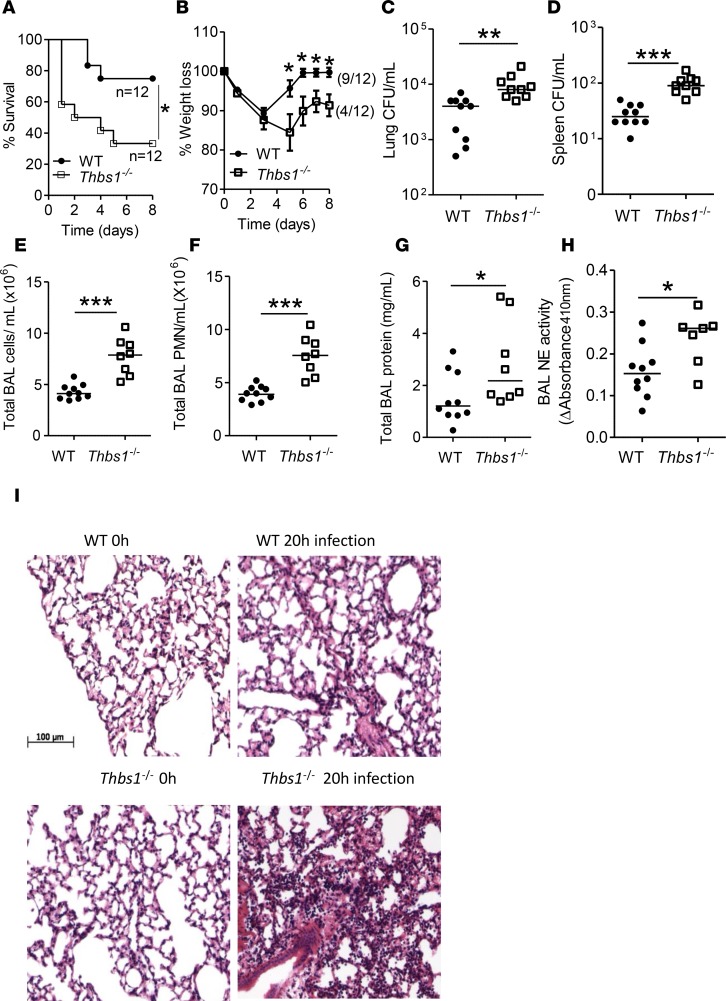Figure 1. Thbs1–/– mice show enhanced mortality, failure to regain weight, higher lung bacterial burden, increased splenic dissemination, and increased airspace neutrophil recruitment and lung microvascular permeability following intratracheal Pseudomonas aeruginosa inoculation.
Thbs1–/– and WT mice were intratracheally instilled with P. aeruginosa (PA) at 106 inoculum. (A) Kaplan–Meier survival curve of WT and Thbs1–/– mice following i.t. infection with PA (n = 12 mice per group), *P < 0.05 by log-rank (Mantel-Cox) test. (B) Mice weights were measured for 8 days in WT and Thbs1–/– mice following i.t. infection with PA (n = 12 mice per group), *P < 0.05 by 2-way ANOVA with Sidak multiple comparisons. (C–H) In separate experiments, mice were sacrificed at a predetermined time point of 20 hours after infection and (C) lung CFU/ml, (D) spleen CFU/ml, (E) total bronchoalveolar lavage (BAL) cell counts/ml, (F) total BAL PMN counts/ml, (G) total BAL protein concentrations, and (H) BAL free neutrophil elastase (NE) activity were measured. (I) Representative H&E–stained sections of mouse lungs following i.t. PA inoculation. Each data point represents an individual mouse, with lines that indicate the median. The combined results of 2 independent experiments are shown in C–H. *P < 0.05, **P < 0.01, ***P < 0.001 by 2-tailed Mann-Whitney U test.

